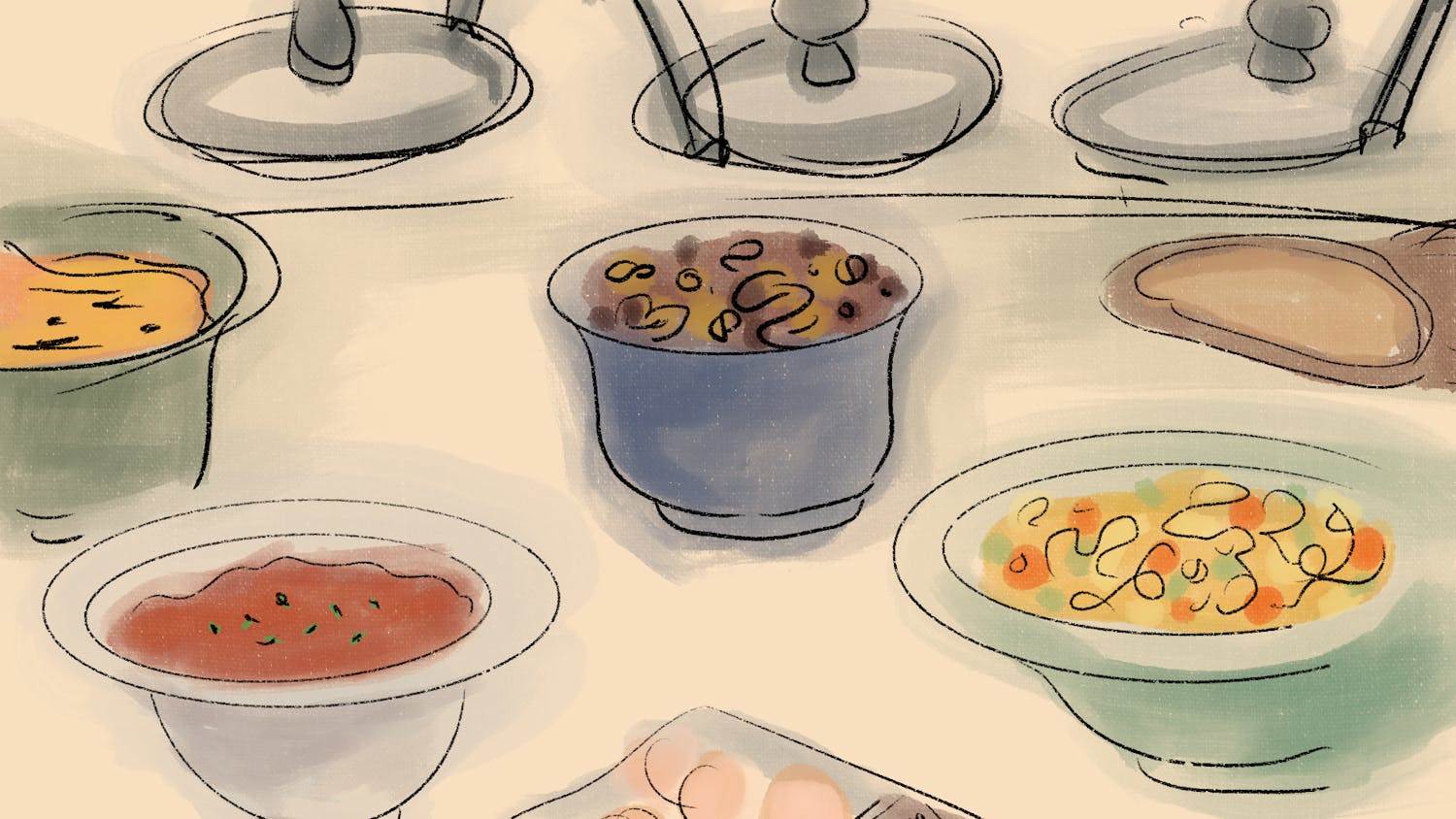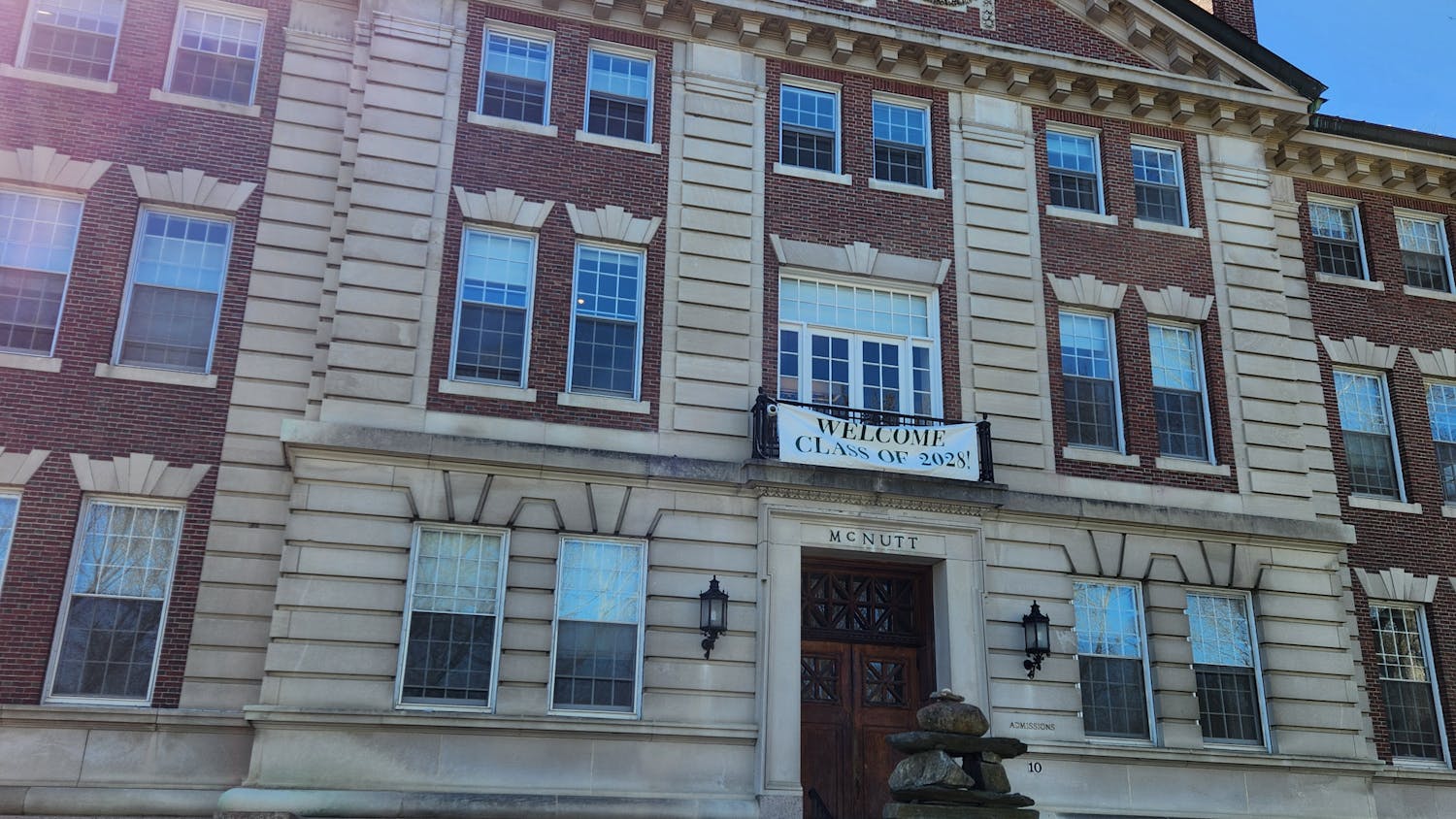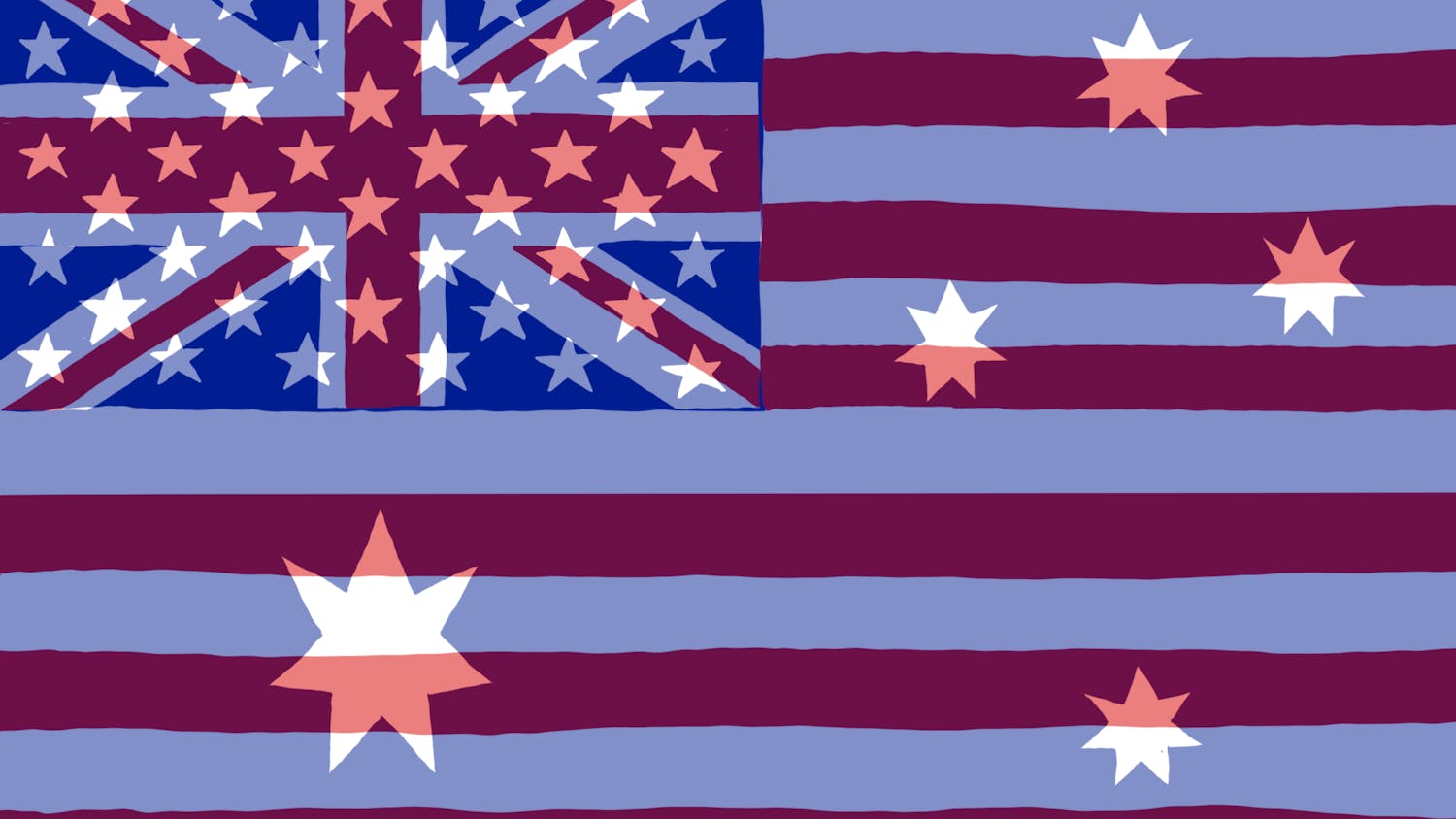Making things might actually be our oldest profession. Humans have been makings things — tools, weapons, pottery, art, fire — since the beginning of our species.
We have come a long way since fashioning objects with stone tools. Here at Dartmouth, up-and-coming artists, music producers and engineers make the world a better and more beautiful place one creation at a time.
Meet the makers of Dartmouth.
For artist Luisa Vasquez ’18 , making art is a creative outlet. Growing up, her mentors taught her to use artistic pursuits as a means of finding balance in a world that is so dominantly organized by scientific and mathematical laws. She said her mother especially emphasized this belief.
“My mom has always taught me growing up that art and music are fundamental balancers in your life,” she said. “You want to have something that’s natural and an expression of emotion.”
Artistic expression helps you organize the world in your own terms, and the best kind of art is a translation of oneself, Vasquez believes.
“My jazz teacher says that when you’re improvising, put part of yourself into it so that other people can feel that you’re really investing yourself in it,” Vasquez said. “It’s the same thing with art.”
One of her most successful creations, she said, was her final project in “Drawing I” last year. By combining her own unique artistic voice, her strongest techniques and personal passions, she feels she made a piece that was both an expression of emotion and a celebration of her artistry. Vasquez explained that she likes to draw hands and feet, so she drew a combination of a hand and foot melded together. An adult’s hand and foot held onto those of a baby, and beside this image was a quote by Gabriel García Márquez that expressed the idea that parents love their children because of the friendships formed while raising them, not simply because they’re their children.
The personal component of this project, inspired by her close relationship with her own mother, contributed to its success, Vasquez said.
While artists have varied motivations and and inspirations, some artists make art simply out of pure enjoyment. Artist Dorothy Qu ’19 feels that if you really enjoy doing something, you should make time for it. So even when she’s not taking an art class here at Dartmouth, she’s constantly making art in her own free time. This year, she made the design for the Winter Carnival t-shirts, which featured a snowflake with Baker Tower and the lone pine. She noted that the design began with a quick doodle on paper, and that she didn’t even have a tablet or Photoshop before entering the competition.
Purchasing a tablet and Photoshop for the competition was one of the best decisions she made last term, Qu said, because they allow her to make the “random art” that she loves to make. Much of her inspiration arises from a curiosity for the world around her and random thought processes that spur her creativity. She said these spontaneous inspirations produce the most true forms of art.
“I just draw stuff that I hear people say. Like if someone mentions bread, I’ll think, ‘Wow, bread looks pretty cool.’ Then I’d start drawing bread and then I’d think, ‘Oh, those stripes look like cats,’” she said. “It’s just weird trains of thought, and I think that’s the most genuine form of art because it’s random stuff that you just authentically think of.”
It’s the urge to create that gives the maker authenticity, and it’s how Tomas La Porta ’18 started producing music. After stopping piano lessons at the end of high school, he realized he wanted to be more than a listener, as music was such an integral part of his life. So he downloaded the starter version of Ableton, a software music sequencer, and began creating music.
His influences include artists like The Chainsmokers, Flume and Louis The Child, he said. He said he likes producing music that can serve versatile purposes — something that people could enjoy listening to in a variety of settings.
“I like to make laid back electronic music,” La Porta said. “I go for listenable stuff; stuff that you can play at a festival and people could dance to, but also something that you could listen to on the way to class.”
La Porta explained that he’s learned that everyone has their own way making music. When he’s making an original song, his piano background plays fundamental role in his creative process.
“If it’s an original song, then you just kind of start randomly,” he said. “Personally, I would say I start with just laying out the outline for the song in piano because that’s where I started with music, by playing piano growing up and then just build from there.”
La Porta noted that he appreciates the immersive quality of making music.
“It’s really the only thing, I think, in my life where I just lose track of time,” La Porta said.
Being able to lose yourself in creation is, I believe, the maker’s livelihood. Being a maker is about producing a creation that has a place in this world. For engineer Emily Rogers ’17 , her role as a maker is to create with a purpose and solve problems.
“I love the hands-on aspect of [engineering],” Rogers said. “Like you see a problem in the world and you say, ‘What can I do to fix it?’ And then you actually go fix it.”
Rogers, currently in Engineering 44 “Sustainable Design,” in which she is working with a group to create a device to address the issue of energy efficiency. She explained that this device would allow people to more easily monitor their home electricity usage on per-room basis and would present this information in a user-friendly way. The goal is for people to make real-time changes in the electricity they’re consuming.
Ostensibly, engineering differs from some other forms of creating like music or art, in that it’s very serviceable in the professional world. However, engineering is not the only marketable form of creation. Vasquez, for example, draws her artistic inspiration partially from her goal to build a career in product design, and therefore for her, art is both a form of personal expression and an employable skill.
“I like art as an expression and just as art, but also as one of many tools that I’m going to have to use in the workplace,” she said. “So being able to effectively transmit an idea to a team and having drawing skills can help a lot.”
However, practical creation can also be done for enjoyment in one’s free time. For instance, last year Rogers made a table held together without any nails or screws purely for fun. She showed me a photo and explained that it’s called a tensegrity structure, which is structure that only works from tension and compression.
Makers make things for many reasons — for fun, to solve a problem, to serve a purpose. And each have different beliefs on the role their work serves.
Vasquez believes that making things is about leaving a positive impact.
"If I can make a product that could improve people’s lives in some way, then I feel like I would have made a good impact, and it would have been worthwhile being here,” she said.
Rogers sees the maker’s role as two-sided: making what people want and making what people didn’t know they needed.
“So I think the job of the maker is often to take something you know needs to be made and make it something that people actually want, too,” she said.
For Qu, making things is a matter of putting yourself out there, whether in the form of papers, ideas, silly doodles or kind words to friends. She said that creation is a part of human nature.
"I think any of those things counts as making something. I think that’s just what makes us human,” Qu said. “We recognize that people make things, and then we appreciate each other for it.”
Maybe we’re all makers, La Porta suggested.
“I think everyone sort of finds ways of creating their own things, whether it’s art or a product,” he said. “So I think everyone is a maker in this world.”
Dorothy Qu ’19 is a member of The Dartmouth opinion staff.



